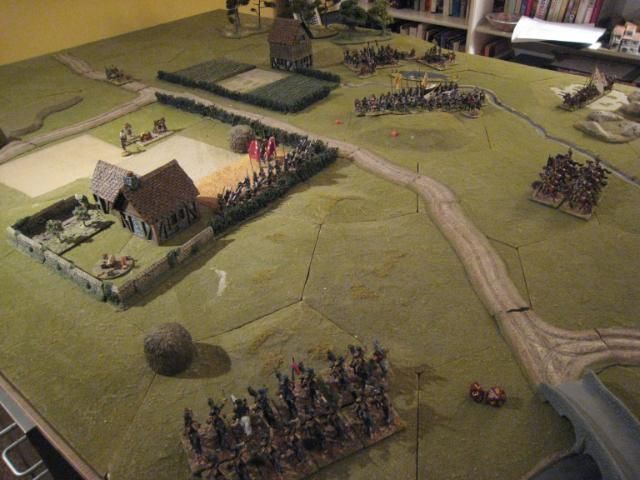
The 7th Foot was raised in 1685 primarily to act as guards for the army's artillery train. The men were armed with fuzils and the regiment's name followed the older spelling of the word until the 1780s. The regiment arrived in Canada in 1773 and at the start of the war formed part of the Quebec garrison. Most of the regiment together with its colours were captured at Forts St John and Chambly in October 1775 (these colours are at the West Point Museum). The men were exchanged in late 1776 and the regiment reformed for duty in New York. The regiment was sent to Philadelphia in 1777 and the following year fought at Monmouth. It then formed part of the New York garrison until joining Clinton's 1780 expedition against Charleston. The 7th remained in the south and was badly mauled at Cowpens, where the regiment's replacement colours were captured. John Andre, the British officer executed in 1780, had been a lieutenant in the 7th Foot's light company during its Canadian operations.
The 7th only appears in two published "British Grenadier!" scenarios, Camden in the first scenario book (18 figures) and early Monmouth in the second (16 figures). The National Army museum has a painting of an officer of the 7th circa 1775 wearing a fusilier bearskin cap (see here), but I'm a believer in the theory that fusilier regiments didn't wear their caps in the field and so I used the Perry campaign dress uniform that matches most of my other 1777/78 regiments. The drummer's coat and lace marks the unit as being a royal regiment. I decided to jazz the drum up a bit by copying the illustration on the Fife and Drum website; I've added a couple of close-ups but the detailing is a bit small for my camera's focusing.
The backpack motif requires a bit of explanation. I wanted to do something more elaborate than a simple "7" or "VII" and looked at the colours for inspiration. The regimental badge is clearly the Tudor rose within the royal garter, but this looked too complicated to paint. I considered painting just the rose, but again this would have been tricky to do effectively on such a small area (I recalled my experience with the 9th Foot's Britannia). I therefore chose the white horse that appears on the regimental colour, thinking that on a dark blue background the motif could be quite effective. However, what I'd forgotten is that the white horse is the regimental badge of the 8th Foot. I assume that the motif appears on the flags of both regiments because the white horse is a symbol of Hanover and was bestowed by the Kings George on certain regiments as a special honour, beginning, I think, with the 8th Foot. Still, it's not the end of the world and I suppose that what I have here is rank and file which can double-up as both regiments (although the 8th Foot is not something I had considered doing).
At the bottom is a post of current wip, a Hessian grenadier battalion and my first "post-Hugo" unit (no prizes for guessing which battalion is it, I'm afraid). Could I offer a huge "thanks" for all the messages about little Hugo. He is well worth the hard work he currently requires and I hope very much that he will grow up to enjoy this hobby as much as I do - what more could a dad want?
16 figures. Painted December 2009.


















































